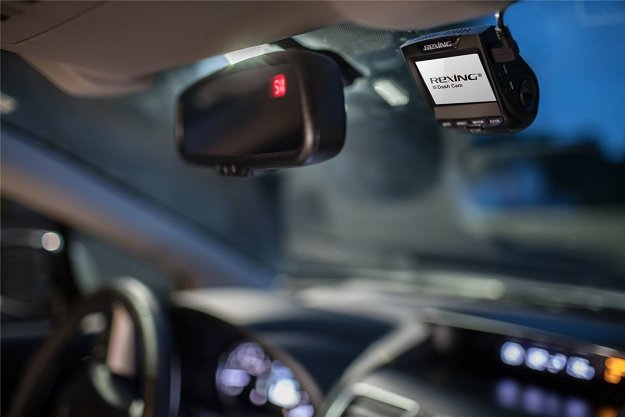No, this Volkswagen Microbus isn’t the victim of an unfortunate accident.
Known as the “Trippy Tippy Hippy Van,” it was built to race in the 24 Hours of LeMons, an endurance racing series for cars ostensibly costing no more than $500. It’s known for wacky creations, like race-ready homages to the Griswolds’ Family Truckster, and a car that’s actually a plane. But even in that company, this VW stands out.
It’s the brainchild of Jeff Bloch, who’s nickname is Speedycop because he’s both a mechanic and a former police officer. In the above video from Barcroft Cars, Bloch explained the secret to the van’s head-scratching appearance: what looks like one vehicle is actually two. A 1976 Volkswagen Microbus body is mounted on top of a 1988 VW Rabbit.
The Rabbit is driven normally, but with the Microbus body surrounding it, Bloch had to get creative. Strategic use of one-way vinyl allowed him to create windows in the bodywork for the driver to see out of, while preserving the illusion of a a VW Microbus driving along on its side. The entire undercarriage is covered by a sheet of vinyl, with an image of an actual VW Microbus undercarriage for authenticity’s sake.
This contraption is powered by a 1.8-liter four-cylinder engine from a Volkswagen GTI. The engine makes 120 horsepower, according to Bloch, allowing the sideways van to do 0 to 60 mph in about 8.0 seconds, and reach a top speed of around 100 mph. A stock VW Microbus tipped right-side up probably couldn’t do much better.
More importantly, the Microbus has proven durable. In its first LeMons outing, it ran for the entire weekend’s worth of racing, Bloch said, completing 224 laps of a roughly 2.0-mile road course. Despite being fairly top heavy, Bloch said it even handled pretty well.
Plenty of bizarre race cars have been unleashed on the world, including some based on VW Microbuses. But the Trippy Tippy Hippy Van might be the strangest of these creations yet. That is, until someone else comes up with something even stranger. Who knows, maybe some enterprising mechanic will try to turn a Microbus into a spaceship, or something.
Editors' Recommendations
- New Qualcomm Snapdragon 690 chip means 5G phones will get much cheaper
- VW’s new carsharing service aims to be a little different from the rest


